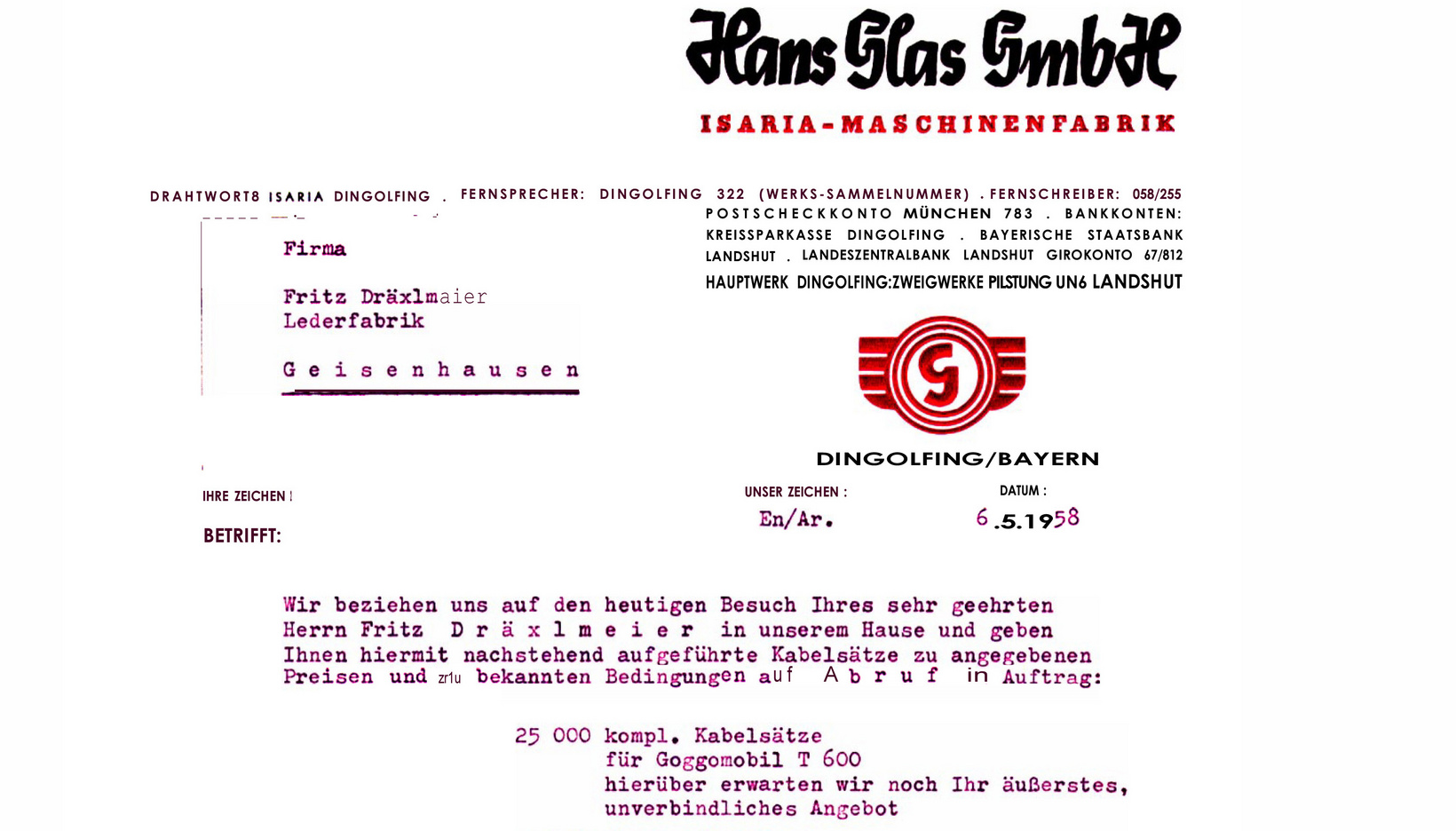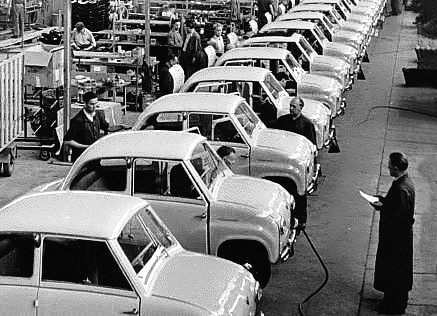1958 to 1960: How it all began
Goggos
and forks
With a great deal of entrepreneurial courage and vision, Lisa and Fritz Dräxlmaier Sr. founded their new company, ELDRA, in order to fulfill this order. Time was pressing, since 100 cable sets per day had to be delivered, starting June 15, 1958.
With just five weeks to get ready, the lead time was anything but fun. The new company had neither a production site nor any employees, only a contract that obligated it to deliver. However, entrepreneurial experience helped.
At each junction there was a fork into which the cable could be placed. This way, there was no slipping and since the cables were suspended above the board they could be easily wrapped with tape. Today, these forks are made from nylon, are finely adjustable, have assignment indicators and cable clamps – but they are all descended from the forks in Lisa Dräxlmaier's kitchen silverware drawer.



